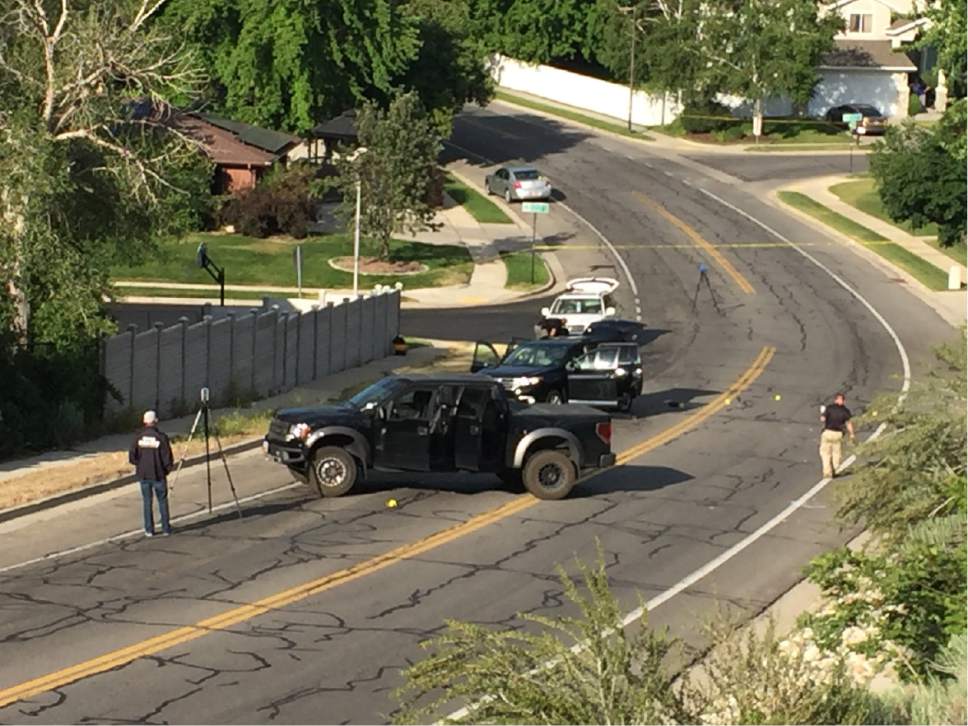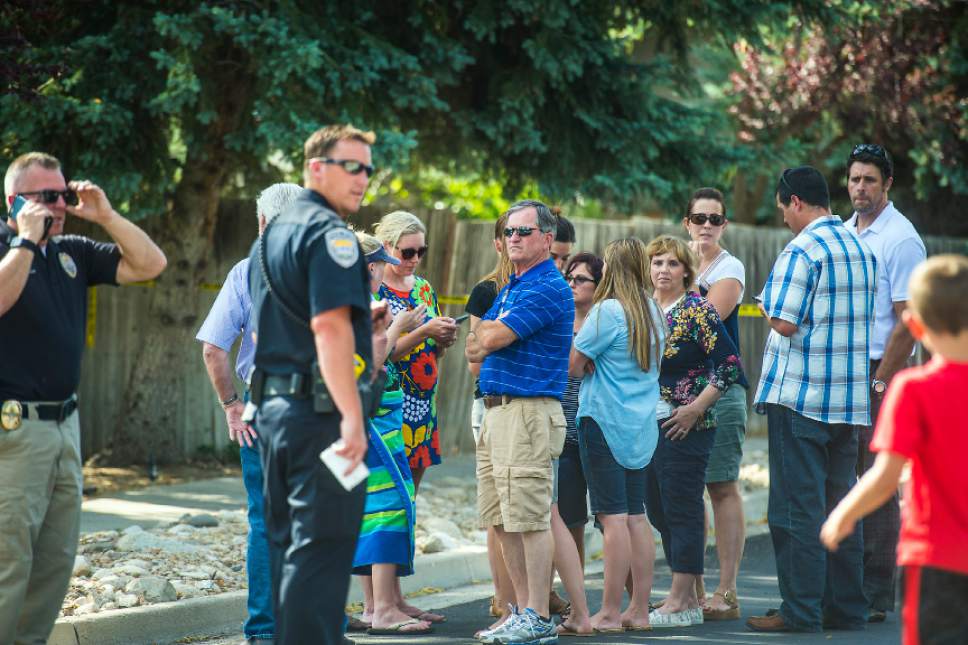This is an archived article that was published on sltrib.com in 2017, and information in the article may be outdated. It is provided only for personal research purposes and may not be reprinted.
Domestic-violence experts say more could have been done to prevent last week's Sandy shooting that killed a 39-year-old woman and her 6-year-old son.
When Memorez Rackley called police about stalking and threats made by her ex-boyfriend on June 3 — three days before the shooting — law enforcement should have identified Rackley as being at "high risk" of violence, said Jenn Oxborrow, Utah Domestic Violence Coalition's executive director.
Police should have then connected her with a victim advocate, Oxborrow said, who could have helped Rackley and her children secure temporary shelter away from Jeremy Patterson — the man who would ultimately open fire on the family in a suburban street on the afternoon of June 6. He killed himself afterward.
"They missed a huge, glaring warning sign on this one," Oxborrow said Wednesday of the Sandy Police Department.
But Sandy police Sgt. Jason Nielsen said officers did take the proper steps in responding to Rackley's call for assistance early June 3, a Saturday. Officers directed her to stay at a friend's house as a precaution, he said, and explained how to petition for a protective order. They told her an extra patrol would be added to keep an eye on her home.
"Our officers offered the resources and advice that was proper, and that we could legally do," Nielsen said.
Police reports and 911 recordings released Tuesday shed new light on what led up to the shooting. In her first 911 call, Rackley said Patterson harassed and threatened her for hours via text message after they broke up the day prior.
He followed her for nearly an hour in her car, she reported, then showed up at her nail salon appointment. He mentioned that he had guns, and he sent her pictures of her children, which she saw as a threat.
In a later conversation with police, Rackley said she thought Patterson had come to her house and jiggled the door handle, then followed around one of her friends to try to figure out where she was.
"It's just continual, he won't stop, and it's gotten to the point where he's threatened me, he's threatened the safety of my children, and I don't know what to do," Rackley told a Sandy dispatcher.
But when the dispatcher initially asked for Patterson's name, Rackley hesitated.
"What happens if I tell?" she said. "Like, are they going to go find him? Because I worry that if they go knock on his door, he's going to come hunt me and my kids down."
The dispatcher agreed to not take Patterson's name early Saturday morning. Later the same day, however, Rackley decided that she did want police to contact Patterson. An officer contacted him, according to the reports, telling him to stop talking to Rackley.
Because what Rackley said in her reports did not meet the legal requirement for domestic violence, Nielsen said Wednesday, officers were not obligated to investigate the situation to the same degree as if it had met the threshold. State law defines domestic violence as crimes involving people who are related, who are or were married to one another, or who are or were living in the same home. The state's definition excludes parent-child relationships.
"If it was a domestic and it had that title, we would have been obligated under law to do things Memorez did not want us to do. We would have been obligated to find him" and potentially arrest him, Nielsen said.
But Oxborrow said the severity of Rackley's situation should have prompted police to put her in touch with a victim advocate, which they did not do. Officers also never administered an 11-question domestic violence "lethality assessment." The department uses the questionnaire to determine how much danger a person is in — and whether a specially trained victim advocate should be called. The department relies on its own four in-house victim advocates for such situations, Nielsen said.
According to a copy of the questionnaire provided by Nielsen, Rackley met several criteria that would have triggered a victim advocate to respond. The assessment also notes that an officer "can always contact a Victim Advocate if they believe the victim is in a potentially dangerous situation."
Sandy police have thus far declined to take part in the state's Lethality Assessment Protocol, a standardized program meant to connect domestic violence victims to resources that can help them.
The program includes officer training conducted by the Utah Domestic Violence Coalition. It also utilizes an 11-question lethality assessment; if a person is at "high risk," the program requires a phone call be made to a local victim service provider's 24-hour hotline. The advocate can then locate shelter for the victim or provide counseling and other services.
Oxborrow said 44 of the state's law enforcement agencies have opted into the program. About a year ago, she said, the coalition offered to train Sandy police on the program, "And they said, 'No thank you.' "
Nielsen countered that the department uses its own system, which is effective and relies on its victim advocates. He did say officials are evaluating what could have been done differently in Rackley's case.
"This can be prevented," Oxborrow said. "I'm not blaming Sandy PD, but there's more we can do to recognize the risk factors earlier and utilize the resources that we have."
Jennifer Campbell, executive director of South Valley Services, a domestic violence shelter and resource center, said if Rackley's situation had been relayed to her agency, it would have been a top priority.
"It would have absolutely been a high-risk-of-danger call," she said.
Campbell said the shelter's hotline has received more calls than usual in the days since the shooting as domestic violence victims realize the worst-case scenario they might ultimately face.
"A lot of survivors are looking at this, and they're scared," Campbell said of the shooting. "This is their fear. It makes the reality of the danger they're facing a lot more present."
Domestic disputes that end in homicide aren't uncommon in Utah. Last year, 20 people were killed in such incidents. Domestic violence homicides in Utah have accounted for 42 percent of homicides statewide over the past 16 years, Oxborrow told The Salt Lake Tribune in December. The national average is about 30 percent.
Twitter: @lramseth





